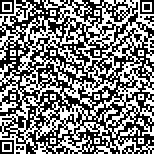| 摘要: |
|
| 关键词: |
| DOI: |
| Received:October 14, 2010Revised:October 14, 2010 |
| 基金项目:This work was done for the China-Singapore Institute of Digital Media (CSIDM) Project (No. CSIDM-200802), partly funded by the National Research Foundation administered by the Media Development Authority of Singapore, and supported by the National Natural Science Foundation of China (No. 60932001). |
|
| Wearable sensors for 3D upper limb motion modeling and ubiquitous estimation |
| Zhiqiang ZHANG,Wai Choong WONG,Jiankang WU |
| (Sensor Network and Application Research Center, Graduate University of Chinese Academy of Sciences; China-Singapore Institute of Digital Media;Department of Electrical and Computer Engineering, National University of Singapore) |
| Abstract: |
| Human motion capture technologies are widely used in interactive game and learning, animation, film special effects, health care, and navigation. Because of the agility, upper limb motion estimation is the most difficult problem in human motion capture. Traditional methods always assume that the movements of upper arm and forearm are independent and then estimate their movements separately; therefore, the estimated motion are always with serious
distortion. In this paper, we propose a novel ubiquitous upper limb motion estimation method using wearable microsensors, which concentrates on modeling the relationship of the movements between upper arm and forearm. Exploration of the skeleton structure as a link structure with 5 degrees of freedom is firstly proposed to model human upper limb motion. After that, parameters are defined according to Denavit-Hartenberg convention, forward kinematic equations of upper limb are derived, and an unscented Kalman filter is invoked to estimate the defined parameters. The experimental results have shown the feasibility and effectiveness of the proposed upper limb motion capture and analysis algorithm. |
| Key words: Ubiquitous motion modeling and estimation Forward kinematic equation Wearable microsensors |

